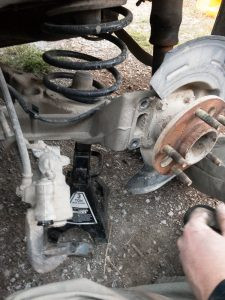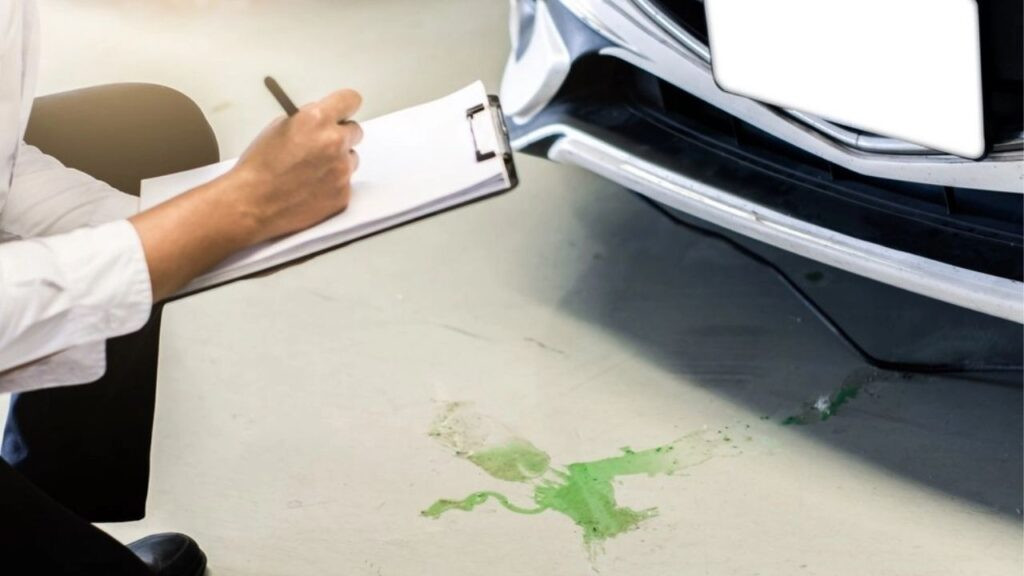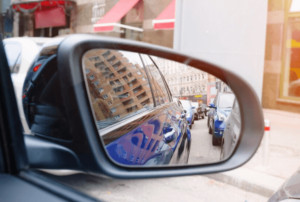How to Fix a Scratch on Black Car Like a Pro
Fixing a scratch on a black car requires the right techniques and products to restore its flawless finish. At CARDIAGTECH.NET, we understand the frustration of seeing scratches on your prized black car, which is why we offer top-notch tools and expert advice to help you tackle this issue effectively. With our guidance, you can confidently remove scratches and maintain the stunning appearance of your vehicle. Discover professional tips and quality products for achieving a showroom-worthy result, and explore advanced scratch repair solutions for automotive care.
1. Understanding the Severity of the Scratch
Before diving into the repair process, it’s essential to determine how deep the scratch is on your black car. This will influence the repair method and products you’ll need. According to the National Automobile Dealers Association (NADA), scratches are generally categorized into three levels: clear coat scratches, paint scratches, and deep scratches that reach the primer or metal.
- Clear Coat Scratches: These are the most superficial, affecting only the clear coat layer. They appear as light marks and can often be fixed with simple polishing techniques.
- Paint Scratches: These scratches penetrate the clear coat and reach the paint layer. They are more noticeable and require a bit more effort to repair, such as using touch-up paint.
- Deep Scratches: These are the most severe, going through the clear coat, paint, and even reaching the primer or metal. These require a comprehensive repair process, including filling, sanding, and painting.
Identifying the type of scratch is the first step toward achieving a flawless repair. Understanding the depth will guide you in selecting the appropriate tools and methods.
2. Essential Tools and Materials for Scratch Repair
To effectively fix scratches on your black car, gather the necessary tools and materials. High-quality products from CARDIAGTECH.NET can make the process smoother and ensure a professional finish.
Here’s a list of essential items:
| Tool/Material | Description |
|---|---|
| Car Wash Soap | Specially formulated to clean your vehicle’s paint without damaging its chemical structure. |
| Microfiber Towels | Soft, lint-free towels for cleaning and drying the car surface without causing further scratches. |
| Rubbing Compound | An abrasive compound used to level the clear coat and remove minor scratches. |
| Polishing Compound | A finer compound used after rubbing compound to restore shine and remove swirl marks. |
| Scratch Remover | A specialized product designed to remove light scratches and imperfections from the clear coat. |
| Touch-Up Paint | Matching the exact color code of your car, used to fill in deeper scratches. |
| Primer | Used to prepare bare metal surfaces for painting, ensuring better adhesion. |
| Clear Coat | Applied after the touch-up paint to protect the repaired area and blend it with the surrounding paint. |
| Sandpaper | Various grits (e.g., 2000, 3000) for smoothing out imperfections and blending the repaired area with the surrounding paint. |
| Polishing Pads | Used with polishing compounds to refine the paint surface and restore gloss. |
| Detailing Clay | Removes embedded contaminants from the paint surface, providing a smooth base for scratch repair. |
| Wax or Sealant | Protects the repaired area and enhances the shine of the paint. |
| Isopropyl Alcohol | Used to clean the surface before applying touch-up paint or clear coat, ensuring proper adhesion. |
| Applicator Pads | For applying rubbing compound, polishing compound, and wax evenly. |
| Mixing Sticks | Used for mixing touch-up paint to ensure uniform color. |
| Drop Cloth | Protects surrounding areas from accidental spills or splatters. |
Having these tools and materials on hand will ensure you’re well-prepared to tackle any scratch repair job on your black car.
2.1. Selecting the Right Products from CARDIAGTECH.NET
Choosing the right products is crucial for achieving a professional-quality scratch repair. CARDIAGTECH.NET offers a range of high-quality detailing supplies that can help you achieve the best results.
- Scratch Removers: Opt for scratch removers specifically designed for black cars. These products contain fine abrasives that gently buff away surface scratches without damaging the paint.
- Touch-Up Paint: Ensure the touch-up paint matches your car’s exact color code. CARDIAGTECH.NET can help you find the perfect match for a seamless repair.
- Polishing Compounds: Use a high-quality polishing compound to restore the shine and remove any swirl marks left by the scratch remover or rubbing compound.
- Microfiber Towels: Invest in premium microfiber towels to avoid introducing new scratches during the cleaning and polishing process.
Using the right products from CARDIAGTECH.NET ensures you are working with formulations designed for automotive finishes, providing superior results and protecting your car’s paint.
2.2. Safety Gear and Preparation
Before starting any scratch repair, prioritize your safety and prepare your workspace. According to the Occupational Safety and Health Administration (OSHA), personal protective equipment (PPE) is essential when working with chemicals and abrasives.
- Gloves: Wear chemical-resistant gloves to protect your hands from the cleaning agents, solvents, and paint products.
- Mask: Use a respirator or dust mask to avoid inhaling harmful fumes from the chemicals and sanding dust.
- Eye Protection: Wear safety glasses or goggles to protect your eyes from splashes and particles.
- Ventilation: Work in a well-ventilated area to minimize exposure to chemical fumes.
- Surface Preparation: Ensure the car is parked in a shaded area and the surface is cool to the touch. This prevents the products from drying too quickly and ensures even application.
By taking these safety precautions, you can protect yourself and ensure a safe and effective scratch repair process.
3. Step-by-Step Guide to Fixing Minor Clear Coat Scratches
Minor clear coat scratches are the easiest to fix and can often be resolved with a simple polishing process. Here’s how to do it:
3.1. Cleaning the Area
Start by thoroughly cleaning the area around the scratch. Use car wash soap and water to remove any dirt, grime, or contaminants. According to the Environmental Protection Agency (EPA), using eco-friendly car wash products helps protect the environment by reducing harmful chemicals in wastewater.
- Wash the Car: Use a pH-balanced car wash soap from CARDIAGTECH.NET to gently wash the area.
- Rinse Thoroughly: Rinse the area with clean water to remove all soap residue.
- Dry with Microfiber Towel: Use a clean, soft microfiber towel to dry the area completely.
Ensuring the area is clean and dry is crucial for the subsequent steps to be effective.
3.2. Applying Scratch Remover
Next, apply a small amount of scratch remover to a polishing pad. Follow these steps:
- Apply Product: Put a dime-sized amount of scratch remover on a polishing pad.
- Buff the Scratch: Gently buff the scratch using circular motions, applying light to moderate pressure.
- Work the Product: Continue buffing for 2-3 minutes until the scratch appears to diminish.
Scratch removers work by gently abrading the clear coat to level the surface and reduce the visibility of the scratch.
3.3. Polishing the Surface
After using the scratch remover, polish the surface to restore the shine and remove any swirl marks.
- Apply Polishing Compound: Apply a small amount of polishing compound to a clean polishing pad.
- Polish the Area: Use circular motions to polish the area, applying light pressure.
- Buff to Shine: Continue polishing for 2-3 minutes until the surface is smooth and glossy.
Polishing helps to refine the paint surface and bring back the original luster of the clear coat.
3.4. Waxing or Sealing the Repaired Area
To protect the repaired area and enhance the shine, apply a coat of wax or sealant.
- Apply Wax/Sealant: Apply a thin layer of wax or sealant to the area using an applicator pad.
- Allow to Cure: Let the wax or sealant cure according to the manufacturer’s instructions.
- Buff to Shine: Use a clean microfiber towel to buff the area to a high shine.
Waxing or sealing provides a protective layer that helps to prevent future scratches and maintain the appearance of the repaired area.
4. Addressing Deeper Paint Scratches
Deeper paint scratches require a more involved repair process, including the use of touch-up paint.
4.1. Cleaning and Sanding the Scratch
Start by cleaning the area and gently sanding the scratch to create a smooth surface for the touch-up paint to adhere to.
- Clean the Area: Wash the area with car wash soap and water, then dry thoroughly.
- Sand the Scratch: Use 2000-grit sandpaper to gently sand the scratch, feathering the edges.
- Clean Again: Clean the area again to remove any sanding dust.
Sanding helps to remove any rough edges and create a smooth surface for the touch-up paint.
4.2. Applying Touch-Up Paint
Apply the touch-up paint in thin, even layers, allowing each layer to dry before applying the next.
- Apply Primer (if necessary): If the scratch has exposed the metal, apply a thin layer of primer first.
- Apply Touch-Up Paint: Use a fine brush to carefully apply the touch-up paint to the scratch.
- Apply Thin Layers: Apply several thin layers, allowing each layer to dry for 15-20 minutes before applying the next.
Applying thin layers helps to prevent the paint from running and ensures a smooth, even finish.
4.3. Blending and Polishing
Once the touch-up paint is dry, blend the repaired area with the surrounding paint and polish to restore the shine.
- Wet Sand (optional): If necessary, use 3000-grit sandpaper to gently wet sand the repaired area, blending it with the surrounding paint.
- Apply Polishing Compound: Apply polishing compound to a polishing pad and polish the area until smooth.
- Wax/Sealant: Apply wax or sealant to protect the repaired area and enhance the shine.
Blending and polishing help to make the repair seamless and restore the original luster of the paint.
4.4. Tips for Matching Touch-Up Paint
Matching the touch-up paint to your car’s exact color is crucial for a seamless repair.
- Check the Color Code: Find your car’s color code on the driver’s side door jamb or in the owner’s manual.
- Test the Paint: Before applying the touch-up paint to the scratch, test it on an inconspicuous area to ensure it matches the surrounding paint.
- Mix Thoroughly: Mix the touch-up paint thoroughly before each application to ensure uniform color.
- Apply in Thin Layers: Apply the touch-up paint in thin layers to avoid creating a noticeable build-up.
By following these tips, you can ensure a perfect color match and a flawless repair.
5. Repairing Deep Scratches That Reach the Primer or Metal
Deep scratches that reach the primer or metal require a more extensive repair process to prevent rust and ensure a lasting repair.
5.1. Preparing the Area
Start by thoroughly cleaning the area and removing any rust or corrosion.
- Clean the Area: Wash the area with car wash soap and water, then dry thoroughly.
- Remove Rust: Use a wire brush or rust remover to remove any rust or corrosion from the scratch.
- Clean Again: Clean the area again to remove any debris.
Removing rust and corrosion is crucial for preventing further damage and ensuring the repair lasts.
5.2. Applying Primer
Apply a thin layer of primer to the bare metal to protect it and provide a base for the touch-up paint.
- Apply Primer: Use a fine brush to apply a thin, even layer of primer to the scratch.
- Allow to Dry: Let the primer dry completely according to the manufacturer’s instructions.
- Sand Lightly: Lightly sand the primer with 3000-grit sandpaper to create a smooth surface.
Primer helps to protect the metal from rust and provides a better surface for the touch-up paint to adhere to.
5.3. Applying Touch-Up Paint and Clear Coat
Apply the touch-up paint in thin, even layers, followed by a clear coat to protect the repaired area and blend it with the surrounding paint.
- Apply Touch-Up Paint: Use a fine brush to carefully apply the touch-up paint to the scratch.
- Apply Thin Layers: Apply several thin layers, allowing each layer to dry for 15-20 minutes before applying the next.
- Apply Clear Coat: Apply a thin layer of clear coat to protect the repaired area and blend it with the surrounding paint.
Clear coat provides a protective layer that helps to prevent future scratches and maintain the appearance of the repaired area.
5.4. Final Polishing and Protection
Once the clear coat is dry, polish the repaired area and apply wax or sealant to protect it and enhance the shine.
- Polish the Area: Use a polishing compound and a polishing pad to polish the repaired area until smooth.
- Wax/Sealant: Apply wax or sealant to protect the repaired area and enhance the shine.
- Buff to Shine: Use a clean microfiber towel to buff the area to a high shine.
Final polishing and protection help to make the repair seamless and restore the original luster of the paint.
6. Advanced Techniques for Black Car Scratch Repair
For those looking to achieve a professional-quality finish, consider these advanced techniques.
6.1. Using a Detailing Clay Bar
A detailing clay bar can remove embedded contaminants from the paint surface, providing a smooth base for scratch repair.
- Wash the Car: Wash the car thoroughly to remove loose dirt and grime.
- Spray Lubricant: Spray a detailing clay lubricant onto the surface.
- Glide Clay Bar: Glide the clay bar over the surface, using light pressure to remove contaminants.
- Wipe Clean: Wipe the surface clean with a microfiber towel.
Using a detailing clay bar ensures a smooth, clean surface for scratch repair.
6.2. Wet Sanding Techniques
Wet sanding can help to level the clear coat and blend the repaired area with the surrounding paint.
- Prepare Sandpaper: Soak 2000-grit or 3000-grit sandpaper in water for 10-15 minutes.
- Sand the Area: Gently sand the area with the wet sandpaper, using light pressure.
- Rinse Frequently: Rinse the area frequently to remove sanding debris.
- Dry with Microfiber Towel: Dry the area with a clean microfiber towel.
Wet sanding is an advanced technique that requires patience and skill, but it can produce excellent results.
6.3. Using a Dual-Action Polisher
A dual-action polisher can make the polishing process more efficient and effective.
- Apply Compound: Apply a small amount of polishing compound to a polishing pad.
- Polish the Area: Use the dual-action polisher to polish the area, using overlapping passes.
- Check Progress: Check the progress frequently to avoid over-polishing.
- Wipe Clean: Wipe the surface clean with a microfiber towel.
A dual-action polisher can help to remove scratches and swirl marks more effectively than hand polishing.
7. Preventive Measures to Avoid Scratches on Black Cars
Prevention is always better than cure. Here are some tips to help you avoid scratches on your black car:
7.1. Proper Washing Techniques
Using proper washing techniques can minimize the risk of introducing new scratches.
- Use Two-Bucket Method: Use two buckets – one for soapy water and one for rinsing the wash mitt.
- Wash Mitt Material: Use a high-quality microfiber wash mitt to avoid scratching the paint.
- Top to Bottom: Wash the car from top to bottom, as the lower areas tend to be dirtier.
- Rinse Frequently: Rinse the car frequently to remove loose dirt and grime.
Proper washing techniques help to protect your car’s paint and minimize the risk of scratches.
7.2. Regular Waxing and Sealing
Regular waxing and sealing can provide a protective layer that helps to prevent scratches.
- Wax/Sealant Application: Apply a coat of wax or sealant every 3-6 months to protect the paint.
- Protective Layer: Wax and sealant provide a barrier against scratches, UV rays, and environmental contaminants.
- Enhanced Shine: Regular waxing and sealing can also enhance the shine of your car’s paint.
Regular waxing and sealing are essential for maintaining the appearance of your black car.
7.3. Avoiding Automatic Car Washes
Automatic car washes can be convenient, but they can also introduce scratches to your car’s paint.
- Harsh Brushes: Automatic car washes often use harsh brushes that can scratch the paint.
- Swirl Marks: Automatic car washes can leave swirl marks on the paint surface.
- Hand Washing: Opt for hand washing or touchless car washes to minimize the risk of scratches.
Avoiding automatic car washes can help to protect your car’s paint from scratches.
8. Common Mistakes to Avoid When Repairing Scratches
Avoiding these common mistakes can help you achieve a professional-quality scratch repair.
8.1. Using the Wrong Products
Using the wrong products can damage your car’s paint and make the scratch look worse.
- Dish Soap: Avoid using dish soap to wash your car, as it can strip away the protective wax layer.
- Abrasive Cleaners: Avoid using abrasive cleaners that can scratch the paint.
- Matching Products: Use products specifically designed for automotive finishes.
Using the right products is essential for a successful scratch repair.
8.2. Applying Too Much Pressure
Applying too much pressure when sanding or polishing can damage the paint and create swirl marks.
- Light Pressure: Use light to moderate pressure when sanding or polishing.
- Even Strokes: Use even strokes to avoid creating uneven surfaces.
- Check Progress: Check the progress frequently to avoid over-sanding or over-polishing.
Applying the right amount of pressure is crucial for achieving a smooth, even finish.
8.3. Rushing the Process
Rushing the process can lead to mistakes and a poor-quality repair.
- Take Your Time: Take your time and follow each step carefully.
- Allow Drying Time: Allow sufficient drying time between coats of paint or clear coat.
- Check Your Work: Check your work frequently to ensure you are achieving the desired results.
Patience is key to achieving a professional-quality scratch repair.
9. Maintaining Your Black Car’s Finish
Maintaining your black car’s finish requires regular care and attention.
9.1. Regular Washing and Detailing
Regular washing and detailing can help to keep your car looking its best.
- Wash Frequency: Wash your car every 1-2 weeks to remove dirt and grime.
- Detailing: Detail your car every 3-6 months to protect the paint and enhance the shine.
- Professional Detailing: Consider professional detailing services for a more thorough cleaning and protection.
Regular care and attention can help to keep your black car looking its best for years to come.
9.2. Storing Your Car Properly
Storing your car properly can help to protect it from scratches and other damage.
- Garage Parking: Park your car in a garage or covered area to protect it from the elements.
- Car Cover: Use a car cover to protect your car from scratches and UV rays.
- Avoid Harsh Conditions: Avoid parking your car in harsh conditions, such as under trees or near construction sites.
Proper storage can help to protect your car from scratches and other damage.
9.3. Addressing Issues Promptly
Addressing scratches and other issues promptly can prevent them from becoming worse.
- Immediate Repair: Repair scratches as soon as possible to prevent rust and further damage.
- Professional Assistance: Seek professional assistance for more complex repairs.
- Regular Inspections: Inspect your car regularly for scratches and other issues.
Addressing issues promptly can help to maintain the appearance and value of your black car.
10. Why Choose CARDIAGTECH.NET for Your Automotive Repair Needs
CARDIAGTECH.NET offers a comprehensive range of high-quality tools and supplies for all your automotive repair needs.
10.1. High-Quality Products
CARDIAGTECH.NET offers only the highest quality products from trusted brands.
- Premium Materials: Our products are made from premium materials to ensure durability and performance.
- Extensive Testing: Our products undergo extensive testing to ensure they meet our high standards.
- Customer Satisfaction: We are committed to customer satisfaction and stand behind our products.
High-quality products are essential for achieving professional-quality results.
10.2. Expert Advice and Support
CARDIAGTECH.NET provides expert advice and support to help you with your automotive repair projects.
- Knowledgeable Staff: Our knowledgeable staff can answer your questions and provide guidance on product selection and usage.
- Online Resources: We offer a variety of online resources, including how-to guides and videos, to help you with your repairs.
- Customer Service: Our customer service team is available to assist you with any issues or concerns.
Expert advice and support can help you achieve successful scratch repairs and maintain your vehicle’s appearance.
10.3. Convenient Shopping Experience
CARDIAGTECH.NET offers a convenient shopping experience with a wide selection of products and fast shipping.
- Easy-to-Use Website: Our website is easy to navigate and allows you to quickly find the products you need.
- Secure Checkout: Our checkout process is secure and protects your personal and financial information.
- Fast Shipping: We offer fast shipping to get your products to you quickly.
A convenient shopping experience makes it easy to get the tools and supplies you need for your automotive repair projects.
Dealing with scratches on your black car can be frustrating, but with the right tools, techniques, and preventive measures, you can keep your car looking its best. CARDIAGTECH.NET is your trusted partner for all your automotive repair needs, providing high-quality products, expert advice, and a convenient shopping experience.
Don’t let scratches diminish the beauty of your black car. Contact CARDIAGTECH.NET today at +1 (641) 206-8880 or visit our website CARDIAGTECH.NET for expert advice and premium tools to restore your car’s flawless finish. Our address is 276 Reock St, City of Orange, NJ 07050, United States. Let us help you elevate your car care experience.
FAQ: How to Fix a Scratch on Black Car
-
What are the different types of scratches that can occur on a black car?
Scratches on black cars can be categorized into clear coat scratches, paint scratches, and deep scratches that reach the primer or metal. Clear coat scratches are superficial and affect only the clear coat layer, paint scratches penetrate the clear coat and reach the paint layer, while deep scratches go through the clear coat, paint, and even reach the primer or metal.
-
What tools and materials are essential for fixing scratches on a black car?
Essential tools and materials include car wash soap, microfiber towels, rubbing compound, polishing compound, scratch remover, touch-up paint, primer, clear coat, sandpaper (various grits), polishing pads, detailing clay, wax or sealant, isopropyl alcohol, applicator pads, mixing sticks, and a drop cloth.
-
How do I prepare the area before fixing a scratch on my black car?
First, thoroughly clean the area around the scratch with car wash soap and water, then dry it with a clean microfiber towel. If necessary, use detailing clay to remove any embedded contaminants from the paint surface.
-
What is the process for fixing minor clear coat scratches on a black car?
For minor clear coat scratches, apply a small amount of scratch remover to a polishing pad and gently buff the scratch using circular motions. Follow this by polishing the surface with a polishing compound to restore the shine. Finally, apply a coat of wax or sealant to protect the repaired area.
-
How do I address deeper paint scratches on my black car?
Deeper paint scratches require the use of touch-up paint. Clean and lightly sand the scratch, then apply thin, even layers of touch-up paint, allowing each layer to dry before applying the next. Once dry, blend the repaired area with the surrounding paint using fine-grit sandpaper and polishing compound.
-
What should I do if a scratch on my black car has reached the primer or metal?
If the scratch has reached the primer or metal, start by cleaning the area and removing any rust or corrosion. Apply a thin layer of primer to the bare metal, followed by thin layers of touch-up paint. Finish with a clear coat to protect the repaired area and blend it with the surrounding paint.
-
What are some advanced techniques for achieving a professional-quality scratch repair on a black car?
Advanced techniques include using a detailing clay bar to remove embedded contaminants, wet sanding to level the clear coat, and using a dual-action polisher to make the polishing process more efficient and effective.
-
How can I prevent scratches on my black car?
Preventive measures include using proper washing techniques (such as the two-bucket method), regular waxing and sealing, avoiding automatic car washes, and storing your car properly in a garage or covered area.
-
What are some common mistakes to avoid when repairing scratches on a black car?
Common mistakes to avoid include using the wrong products (such as dish soap or abrasive cleaners), applying too much pressure when sanding or polishing, and rushing the repair process.
-
Why should I choose CARDIAGTECH.NET for my automotive repair needs?
CARDIAGTECH.NET offers high-quality products, expert advice and support, and a convenient shopping experience, making it your trusted partner for all your automotive repair needs. Contact us today at +1 (641) 206-8880 or visit our website CARDIAGTECH.NET. Our address is 276 Reock St, City of Orange, NJ 07050, United States.






